Abarth 500 595 695 VS Toyota Mirai
Abarth 500 595 695
The Abarth 500, particularly in its 595 and 695 renditions, captures the spirit of Italian motoring with its compact yet aggressive design. Known for its lively performance and distinctive styling, this little powerhouse is a joy to drive, offering an engaging experience that appeals to enthusiasts. With its rich motorsport heritage, the Abarth 500 embodies the essence of fun and excitement on both the streets and the race track.
more informationToyota Mirai
The Toyota Mirai represents a groundbreaking step in hydrogen fuel cell technology, offering an eco-friendly alternative to traditional petrol engines. Its sleek design and futuristic aesthetic make it a standout on the road, while the interior combines comfort with cutting-edge features. With its impressive range and quick refuelling capabilities, the Mirai is paving the way for the future of sustainable motoring.
more information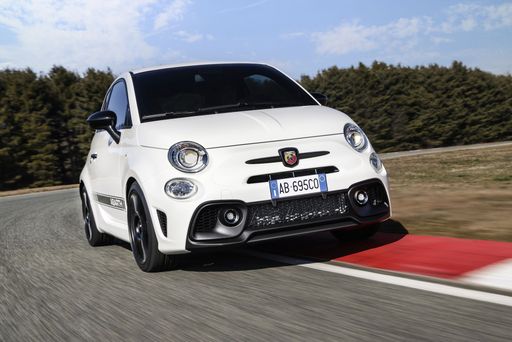 @ media.stellantis.com
@ media.stellantis.com
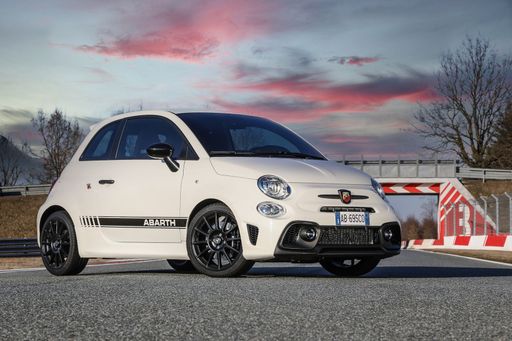 @ media.stellantis.com
@ media.stellantis.com
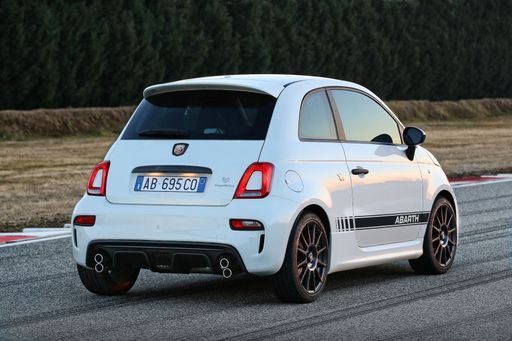 @ media.stellantis.com
@ media.stellantis.com
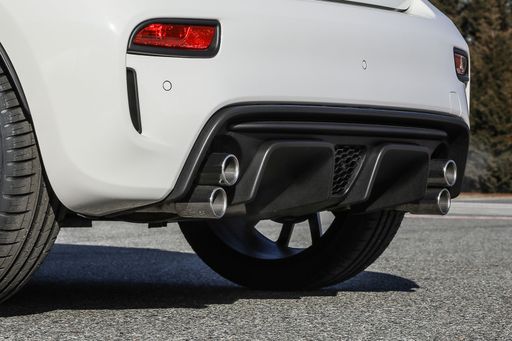 @ media.stellantis.com
@ media.stellantis.com
 @ media.stellantis.com
@ media.stellantis.com
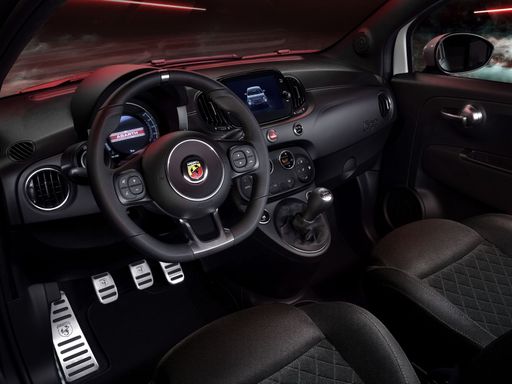 @ media.stellantis.com
@ media.stellantis.com
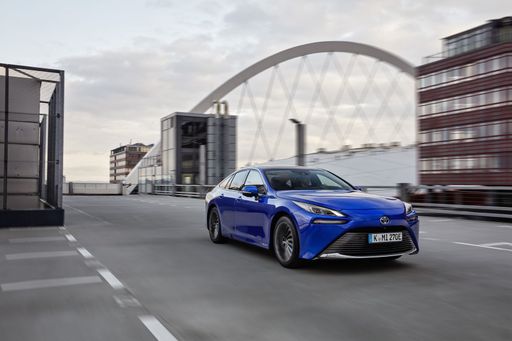 @ Toyota
@ Toyota
Costs and Consumption |
|
|---|---|
|
Price
about 32600 - 39400
£
|
Price
-
|
|
Consumption L/100km
-
|
Consumption L/100km
-
|
|
Consumption kWh/100km
17.2 - 18.9
kWh
|
Consumption kWh/100km
-
|
|
Electric Range
242 - 265
km
|
Electric Range
-
|
|
Battery Capacity
37.8
kWh
|
Battery Capacity
-
|
|
co2
0
g/km
|
co2
-
|
|
Fuel tank capacity
-
|
Fuel tank capacity
-
|
Dimensions and Body |
|
|
Body Type
Hatchback
|
Body Type
-
|
|
Seats
4
|
Seats
-
|
|
Doors
3
|
Doors
-
|
|
Curb weight
1410 - 1435
kg
|
Curb weight
-
|
|
Trunk capacity
185
L
|
Trunk capacity
-
|
|
Length
3673
mm
|
Length
-
|
|
Width
1682
mm
|
Width
-
|
|
Height
1518
mm
|
Height
-
|
|
Payload
370 - 385
kg
|
Payload
-
|
Engine and Performance |
|
|
Engine Type
Electric
|
Engine Type
-
|
|
Transmission
Automatic
|
Transmission
-
|
|
Transmission Detail
Reduction Gearbox
|
Transmission Detail
-
|
|
Drive Type
Front-Wheel Drive
|
Drive Type
-
|
|
Power HP
155
HP
|
Power HP
-
|
|
Acceleration 0-100km/h
7
s
|
Acceleration 0-100km/h
-
|
|
Max Speed
155
km/h
|
Max Speed
-
|
|
Torque
235
Nm
|
Torque
-
|
|
Number of Cylinders
-
|
Number of Cylinders
-
|
|
Power kW
114
kW
|
Power kW
-
|
|
Engine capacity
-
|
Engine capacity
-
|
|
Top speed
155
km/h
|
Top speed
-
|
General |
|
|
Model Year
2023
|
Model Year
-
|
|
CO2 Efficiency Class
A
|
CO2 Efficiency Class
-
|
|
Brand
Abarth
|
Brand
-
|
Abarth 500 595 695
The Abarth 500 has long been regarded as a significant name within the compact performance car segment, blending iconic Italian styling with impressive performance. The latest iterations, namely the Abarth 500 595 and 695, along with the 500e electric model, continue this tradition. Enthusiasts and everyday drivers alike are drawn to their sporty ethos and cutting-edge technologies.
Abarth 500: A Fusion of Style and Performance
The Abarth 500 boasts a distinctive design that is instantly recognisable. Its compact dimensions, measuring 3673 mm in length and 1682 mm in width, ensure it retains that quintessential city car appeal while still providing an eye-catching presence on the road. The aggressive stance and sporty enhancements reflect Abarth's racing heritage, making it a desired choice for performance aficionados.
Powertrain Innovations
At the heart of the Abarth 500 lineup lies an efficient electric powertrain that produces a substantial 155 PS (or 114 kW). This power is delivered through an automated transmission, ensuring seamless gear changes and an engaging driving experience. The inclusion of a reduction gearbox allows for rapid acceleration, achieving 0-100 km/h in just 7 seconds, making it competitive in its class.
Exceptional Efficiency and Range
One of the standout features of the Abarth 500e variants is their impressive energy efficiency. Depending on the model, the energy consumption ranges between 17.2 and 18.9 kWh/100 km, showcasing Abarth's commitment to sustainability without compromising performance. With an estimated range between 242 and 265 km on a single charge, the Abarth 500e models are well-equipped for both urban commutes and longer journeys.
Technical Specifications at a Glance
The Abarth 500 595 and 695 models feature a robust torque output of 235 Nm, offering responsive acceleration and confident overtaking capabilities. The maximum speed is electronically limited to 155 km/h, providing a thrilling driving experience while maintaining safety standards. Additionally, the vehicle's lightweight construction, with a total weight between 1410 kg and 1435 kg, further enhances agility and handling.
Thoughtful Interior and Practicality
Inside, the Abarth 500 is crafted for both comfort and functionality. Accommodating up to four occupants, the interior remains practical despite its sporty intentions. A boot capacity of 185 litres ensures that the vehicle is not just about speed but also everyday usability. Innovative technology features include a user-friendly infotainment system that integrates seamlessly with smartphones, enhancing the driving experience further.
Conclusion: The Future of Abarth
With the Abarth 500 595, 695, and the innovative electric 500e models, Abarth continues to strive for a perfect balance between performance and efficiency. These vehicles not only reflect the brand's rich heritage but also pave the way towards a more sustainable future in automotive engineering. Each drive in an Abarth 500 promises to be a spirited affair, delivering excitement and innovation mile after mile.
Toyota Mirai
The Future of Driving: Introducing the Toyota Mirai
The Toyota Mirai represents a significant leap forward in automotive innovation, being one of the leading vehicles in the hydrogen fuel cell market. As we continue to search for sustainable transportation solutions, the Mirai stands out with its pioneering technology and exceptional driving features.
Revolutionary Hydrogen Fuel Cell Technology
At the heart of the Toyota Mirai is its groundbreaking hydrogen fuel cell system. Unlike conventional internal combustion engines, the Mirai uses a fuel cell stack to generate electricity through the chemical reaction between hydrogen and oxygen. This process not only powers the car with zero emissions—producing only water vapour as a byproduct—but also delivers a smooth and silent drive.
Technical Specifications and Performance
The Toyota Mirai is designed with performance in mind. It boasts a power output of 182 PS (134 kW) and delivers a robust 300 Nm of torque, allowing it to accelerate from 0 to 100 km/h in just 9.2 seconds. While its top speed is a respectable 175 km/h, it's the Mirai's impressive range that really stands out. The vehicle can travel up to 650 km on a single hydrogen fill-up, making it a practical choice for long-distance travel.
Sophisticated Design and Comfort
Designed as a saloon, the Toyota Mirai combines aesthetic appeal with comfort. Its dimensions—4975 mm in length, 1885 mm in width, and 1470 mm in height—provide a spacious interior for five passengers. The design is sleek and modern, reflecting its advanced engineering. The boot offers 300 litres of storage, suitable for everyday needs.
Advanced Features and Safety
The Toyota Mirai doesn't just excel in propulsion technology; it also includes a range of advanced features to enhance driver comfort and safety. Available in three trims—Advanced, Executive, and Luxury—the Mirai includes state-of-the-art safety systems and infotainment options to ensure a connected and secure driving experience.
Cost and Efficiency
While the price of the Toyota Mirai ranges from €65,990 to €76,290, its monthly running costs—estimated between €1,496 and €1,672—and per kilometre costs of 59.9 to 66.9 cents, reflect the efficient nature of hydrogen-powered vehicles. Considering its innovative technology, the Toyota Mirai offers excellent value for those looking to invest in the future of eco-friendly transport.
The Toyota Mirai: Driving Towards a Sustainable Future
Overall, the Toyota Mirai is more than just a car; it's a vision for the future of sustainable transportation. With its cutting-edge hydrogen fuel cell technology, impressive range, and commitment to zero-emissions driving, the Mirai sets a new standard in environmentally conscious car design. Whether you're an eco-enthusiast or just someone seeking a reliable and technological advanced vehicle, the Toyota Mirai is worth considering.
